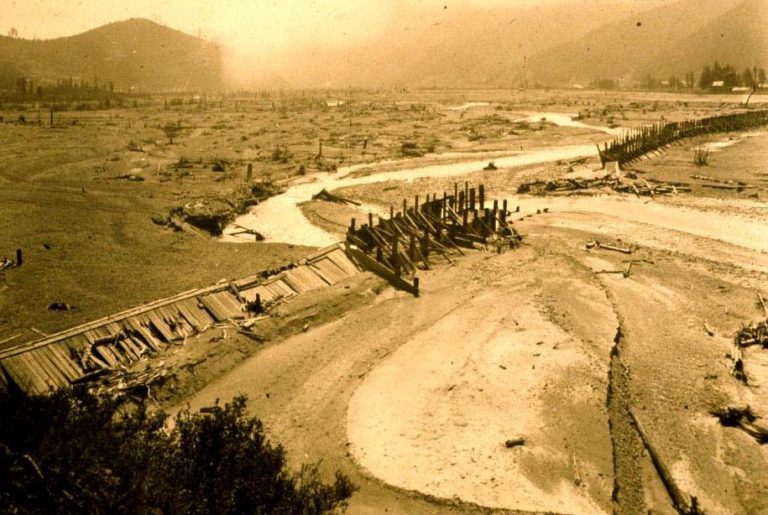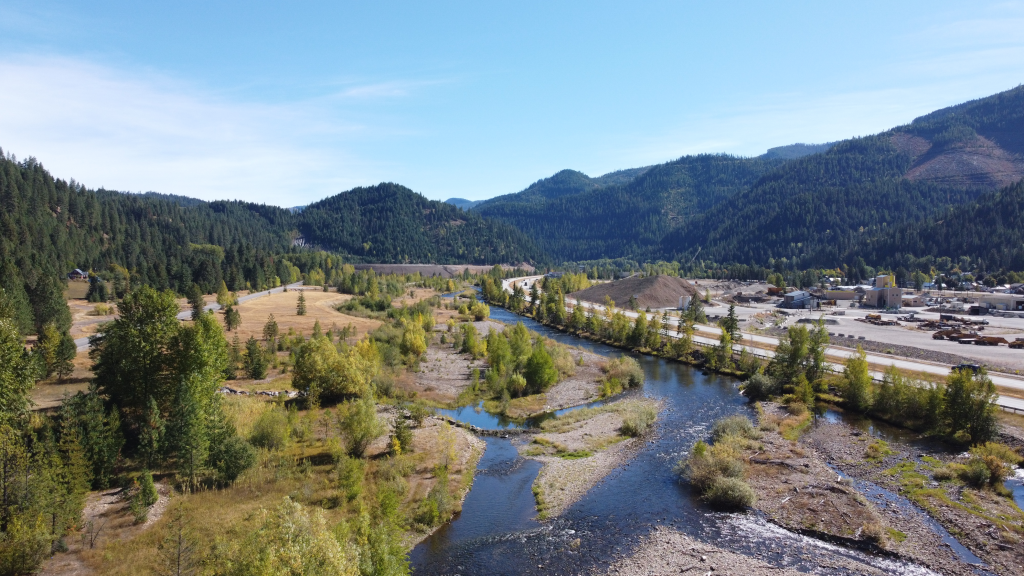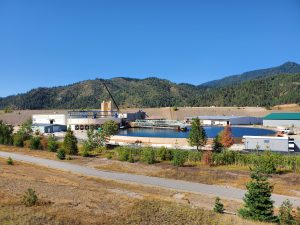The Bunker Hill Superfund Site spans northern Idaho and eastern Washington in an area known as the Silver Valley. Mining and milling operations started in the mid to early 1880s, which resulted in heavy metal contamination throughout the area.
Lead and other heavy metals can pose a risk to people’s health particularly to young children and pregnant women. As a result of this human health concern, the US Environmental Protection Agency (EPA) added this site to the National Priorities List in 1983. Although cleanup efforts have reduced exposures to susceptible populations over the last 30 years, the nature of the cleanup requires ongoing local oversight to ensure completed remedies are protected and additional cleanup activities continue as communities grow and land use changes.
Our Kellogg Superfund Project Office serves as a local resource and is available to assist with questions and issues regarding the cleanup.
This accordion will not appear on the screen
The new regulatory framework for the Institutional Controls Program (ICP) at the Bunker Hill Superfund Site is in effect as of March 20, 2023, under Senate Bill 1013.
The ICP will continue with no significant day-to-day changes in how the ICP operates for affected parties owning or occupying property within the ICP Administrative Boundary for the Box and Basin. The Panhandle Health District (PHD) will continue to administer the program locally.
The ICP is a local program designed to ensure the integrity of protective barriers placed over contaminants left behind from legacy mining. The ICP offers several services free of charge to the users.
Under the program, residents are eligible to receive 1 cubic yard of gravel or topsoil annually to maintain their barrier, and staff is available to provide sampling assistance. The ICP also provides containers and pick-up services for contaminated soil disposal, and high-efficiency HEPA vacuums are loaned out for cleaning residences. For interior home renovation projects, the ICP offers plastic to segregate construction areas, lead-certified respirators, and Tyvek suits to homeowners.
We would like to thank all stakeholders for their participation in this process. DEQ, PHD, and Basin Environmental Improvement Project Commission (BEIPC) Citizen Coordinating Council (CCC) held three public meetings to discuss proposed changes to the regulatory framework. View meeting information under the headings below.
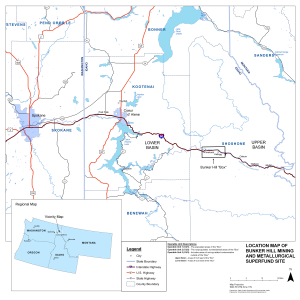 The Silver Valley was founded over 140 years ago for its lead, zinc, and silver mining opportunities. In the early years, mining and milling methods were inefficient compared to today’s standards, and resource minerals and other concentrated constituents such as lead, zinc, silver, cadmium, and arsenic often remained in the tailings and were discharged into streams and floodplains. Metals in the tailings and the chemicals used in milling are hazardous to humans, fish, and waterfowl. Today, mines extract metals with higher efficiency and operate under state and federal environmental laws to reduce potential impacts to the environment.
The Superfund site includes three operable units (OUs). The 21-square-mile area (referred to as the Box) surrounds the historic smelting operations at the Bunker Hill complex. OU1 is the populated areas of the Box, and OU2 is the nonpopulated areas of the Box.
OU3 includes the areas of mining-related contamination outside the Box in the broader river basin, which includes mining-contaminated areas in the Coeur d’Alene River corridor, adjacent floodplains, downstream water bodies, tributaries, and fill areas (referred to as the Coeur d’Alene Basin).
The Silver Valley was founded over 140 years ago for its lead, zinc, and silver mining opportunities. In the early years, mining and milling methods were inefficient compared to today’s standards, and resource minerals and other concentrated constituents such as lead, zinc, silver, cadmium, and arsenic often remained in the tailings and were discharged into streams and floodplains. Metals in the tailings and the chemicals used in milling are hazardous to humans, fish, and waterfowl. Today, mines extract metals with higher efficiency and operate under state and federal environmental laws to reduce potential impacts to the environment.
The Superfund site includes three operable units (OUs). The 21-square-mile area (referred to as the Box) surrounds the historic smelting operations at the Bunker Hill complex. OU1 is the populated areas of the Box, and OU2 is the nonpopulated areas of the Box.
OU3 includes the areas of mining-related contamination outside the Box in the broader river basin, which includes mining-contaminated areas in the Coeur d’Alene River corridor, adjacent floodplains, downstream water bodies, tributaries, and fill areas (referred to as the Coeur d’Alene Basin).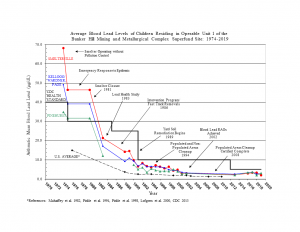 Superfund cleanup decisions are made by EPA and written into records of decision (ROD). A ROD is a legal public document issued by EPA outlining the cleanup that will take place at a Superfund site. EPA is the lead agency for the Bunker Hill Superfund Site.
Superfund cleanup decisions are made by EPA and written into records of decision (ROD). A ROD is a legal public document issued by EPA outlining the cleanup that will take place at a Superfund site. EPA is the lead agency for the Bunker Hill Superfund Site.
Environmental cleanup has been underway since the 1980s through coordinated efforts between federal, state, tribal, industrial, and local community groups. This work has resulted in significant progress:
- Remediating approximately 7,000 residential yards, parks, commercial properties, and other public areas.
- Rehabilitating mine and mill sites, railroad rights of way, recreation areas, and affected drinking water.
- Operating an institutional controls program to ensure that clean soil and other protective barriers over contaminants are left in place to keep remediated properties clean.
- Providing free blood lead screening to residents living within the Bunker Hill Superfund Site as a public health service by Panhandle Health District.
- Offering public health education and project outreach.
DEQ is a partner agency with EPA and Panhandle Health District to implement the cleanup and take into consideration local concerns and the State’s goals and priorities. DEQ’s Kellogg office serves this community and assists the public, property owners, and local governments.
Annual project plans, reports, and updates are brought to the community through the Basin Environmental Improvement Project Commission (BEIPC), a commission of three counties, two states, the federal government, and the Coeur d’Alene Tribe.
Contaminated soil generated by property remediation, homeowner projects, or business development is taken to nearby repositories. Repositories help keep the public safe by centralizing contaminated material in a controlled location.
Repository designs are tailored to site needs and require monitoring wells, stormwater controls, and soil compaction as a part of a protective design. All are regularly monitored to ensure public and ecological safety.
For additional information, contact DEQ’s Kellogg Satellite Office.
In October 2021, DEQ assumed responsibility for operating the newly upgraded Central Treatment Plant (CTP) at the Bunker Hill Superfund Site. DEQ worked with EPA, the Army Corps of Engineers, and their contractors during the construction of the upgraded CTP, which was completed in October 2020. The plant removes metals in mine water discharged from the Bunker Hill Mine and contaminated ground water beneath the historic Bunker Hill central tailings impoundment.
The new system treats up to 5,000 gallons of contaminated water per minute and has shown high metals removal efficacy. Operations are continually optimized to reduce operating costs and maintain the CTP while continuing to produce a clean effluent to provide a significant water quality improvement to the South Fork Coeur d’Alene River.
Long-term funding for the future operations of the plant was provided through an endowment created under a 2011 consent decree (United States of America v. Hecla Mining Company and Consolidated Cases, No. 96-01220N-EJL, No. 91-0342-N-EJL, and No. 94-0206-N-HLR).
In 2014, the Bunker Hill Water Treatment Endowment was established with a deposit of $52.3 million. The Idaho Endowment Fund Investment Board manages these settlement funds through a memorandum of agreement among EPA, the Coeur d’Alene Tribe, and DEQ.
Annual operations are expected to cost approximately two million dollars per year. DEQ is operating the CTP with contractor support, developing staff expertise to oversee the plant, and is continuing to optimize the operations of the new system. The operations data from the first years of running the new system will be used to evaluate future contracting alternatives to make the most efficient use of sources to ensure the sustainability of the operations funding.
This accordion will not appear on the screen
Kellogg Superfund Project Office
1005 W. McKinley Ave.
Kellogg, ID 83837
(208) 783-5781


